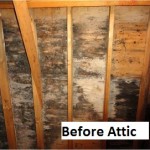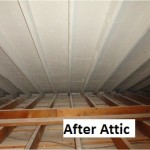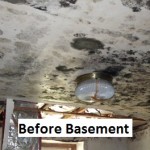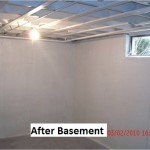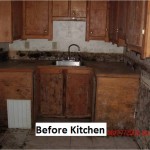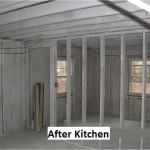
by Mike Quigley | Mar 17, 2016 | Blog
In this home the bathroom fan is exhausting into the soffit area. The exhaust air is being drawn back into the attic accounting for the heavy growth in this area.
The solution was to redirect the exhaust to the gable end with an insulated pipe. If the gable is too far away this could have been vented through the roof.
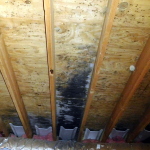
Bath fan into the soffit

by Mike Quigley | Mar 16, 2016 | Blog
I was called by a customer about a suspected mold problem in his attic. He then told me he thought there may be a roof leak because it sounded like water was dripping. I went out to investigate. Sure enough it was raining in his attic. The roofing nails were collecting water vapor and dripping back down on to the insulation and air handler. The plywood roof sheathing was so wet it looked like a sheet of water was cascading down the surface. The gable end was completely covered with wet slimy black mold.
So I said, “how long has this been going on?”. He said “just this winter”. My next question was, “what conditions have changed since last year?”. He said “we got a new roof a few months ago”.
This is what happened. The roofer installed a rolled ridge vent that completely collapsed upon installation of the ridge caps. Water vapor could not escape the attic. The solution was a new collapse resistant ridge vent. Problem solved. I am sure that at least one roofing contractor wanted to install the correct vent, which cost more, and was outbid and didn’t get the job.
The cost to the client. He not only had to pay for a new ridge vent to be installed but also had to pay for the mold remediation of his attic. Did the first roofing contractor do him wrong on purpose? Probably not. The roofing contractor is not a ventilation specialist and probably didn’t know any better. In this case the roofing contractor had been using the same ridge vent for years without problems. The vent never worked but the problem of moisture retention did not present itself until the home was made more efficient. When the home was made more efficient the underperforming or improperly installed ridge vent was finally revealed.
With homes getting tighter and tighter as a result of energy conservation, more attention needs to given to indoor air quality and ventilation issues across the board.
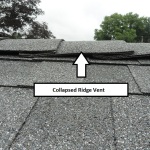
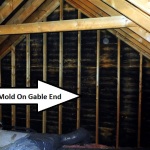
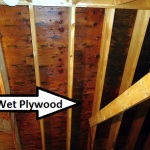

by Mike Quigley | Mar 15, 2016 | Blog
At any givin time a customer will get three or four estimates for a job. At least one person will get it right and will be probably be the highest estimate and in most cases will not get the job. People like to think they got a bargain and typically hire the cheap guy. These bargains seem to add up to savings until problems arise. Then a third party has to be the bad guy and tell them everything they had done was wrong or ineffective.
I was called in to give an estimate for mold remediation of this customers attic. We talked about ventilation systems over the phone and was assured that a contractor had already handled that. When I arrived this is what I found. They installed, vents in vented panels. I had to be the bad guy and explain why this didn’t work. Then I had to be a double bad guy and tell them the new insulation installed in the attic would probably have to come back out because no air sealing was completed.
Note: This is the order of repairs for attic mold. Mold remediation first. Ventilation systems second. Air sealing third. Insulation last. Preferably within days of each other.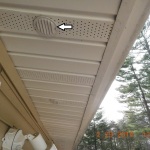

by Mike Quigley | Oct 13, 2014 | Blog
This family had plans to sell there home and move to Florida. Just before the home was to be shown to a prospective buyer, the water heater failed. The basement and all personal belongings were covered with mold and water damage. We had a dumpster there that right away. Within a day we had the basement cleaned out, disinfectant applied and mold growth removed from the floor joists. There had also been some water seepage through the stone wall so we addressed that. We filled in between the stack stone foundation with mortar and sealed the stone wall with three coats of foundation waterproofing. We than repaired the concrete skirt around the house, extended the drainpipes to move water away from the foundation, sealed the entire basement walls and floor joists with white mold preventative sealant and replaced the water heater. Start to finish, 4 days, and we came in under budget.
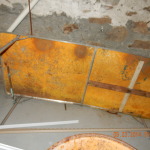
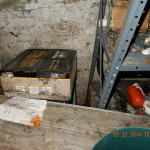
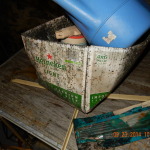
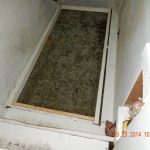
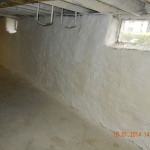
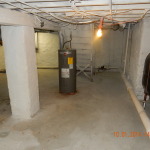

by Mike Quigley | May 6, 2014 | Blog
Attics can build up a tremendous amount of heat in the summer. The excess heat in the attic can raise the temperature in your home. The way to remove that heat is through a balanced attic ventilation system.
At the top or the ridge of the roof, exhaust vents are installed. These are called roof vents , ridge vents or in the case of some homes cupolas.
At the bottom of the roof in the overhang area, a soffit vent system is installed. Without the soffit vents the air has a harder time exhausting through the ridge. Let me give you an example. Put a window fan in your bedroom window and point it outward so that it exhausts air out of your home. Now close the bedroom door. The fan speed slows down. Open the door and the fan speed increases. The open door is working like your soffit vents by allowing air to be drawn out of the attic through the ridge.
Keep your cooling costs down this summer and reduce moisture that could lead to mold growth by having Quigley Company install a balanced ventilation system now.
The first picture is an attic vented with a cupola. The second is a modern style shingle vent II ridge vent. The third picture shows the direction of airflow. And the fourth picture is of a typical soffit vent called a continuous strip vent.
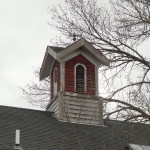
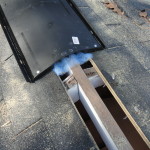
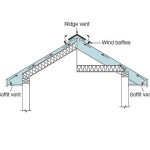
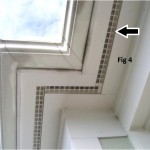

by Mike Quigley | Apr 7, 2014 | Blog
The kitchen and finished basement were both water damaged by broken pipes. The basement incident was from a fully depreciated hot water heater and the kitchen from burst piece of baseboard heat. The attic was a result of vapor migration from a dirt basement and a bathroom fan venting into the attic. We totally gutted the kitchen and basement, cleaned all the surfaces and sprayed everything with an antimicrobial sealant. For the attic, we installed a vapor barrier in the basement, vented the bathroom fan to the exterior, removed the mold and installed an attic ventilation system.
